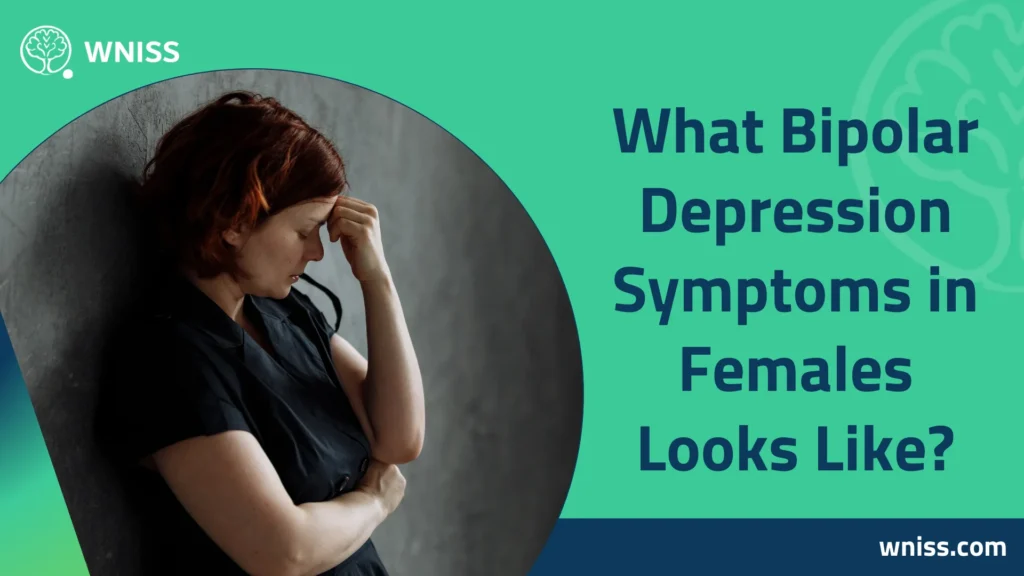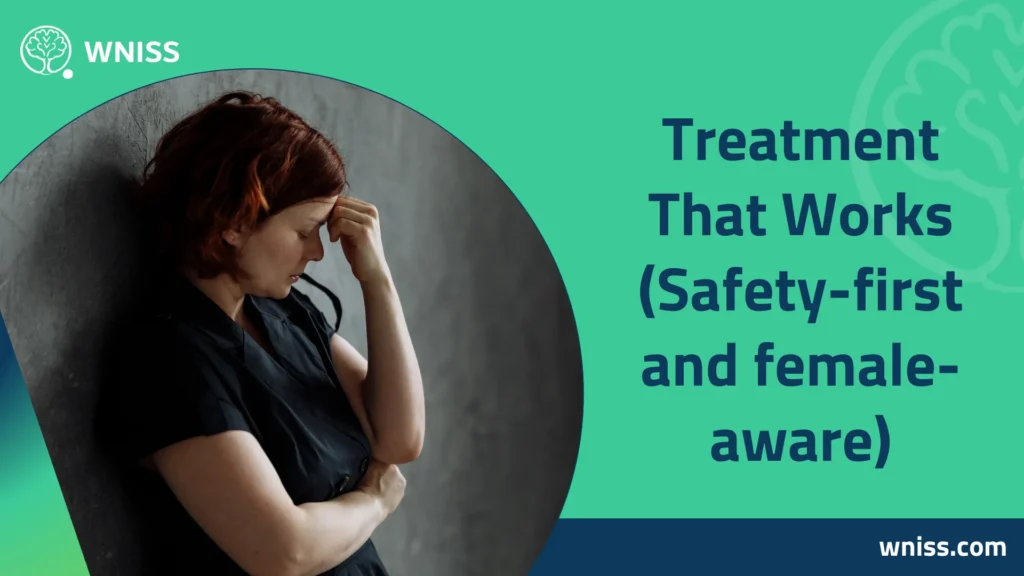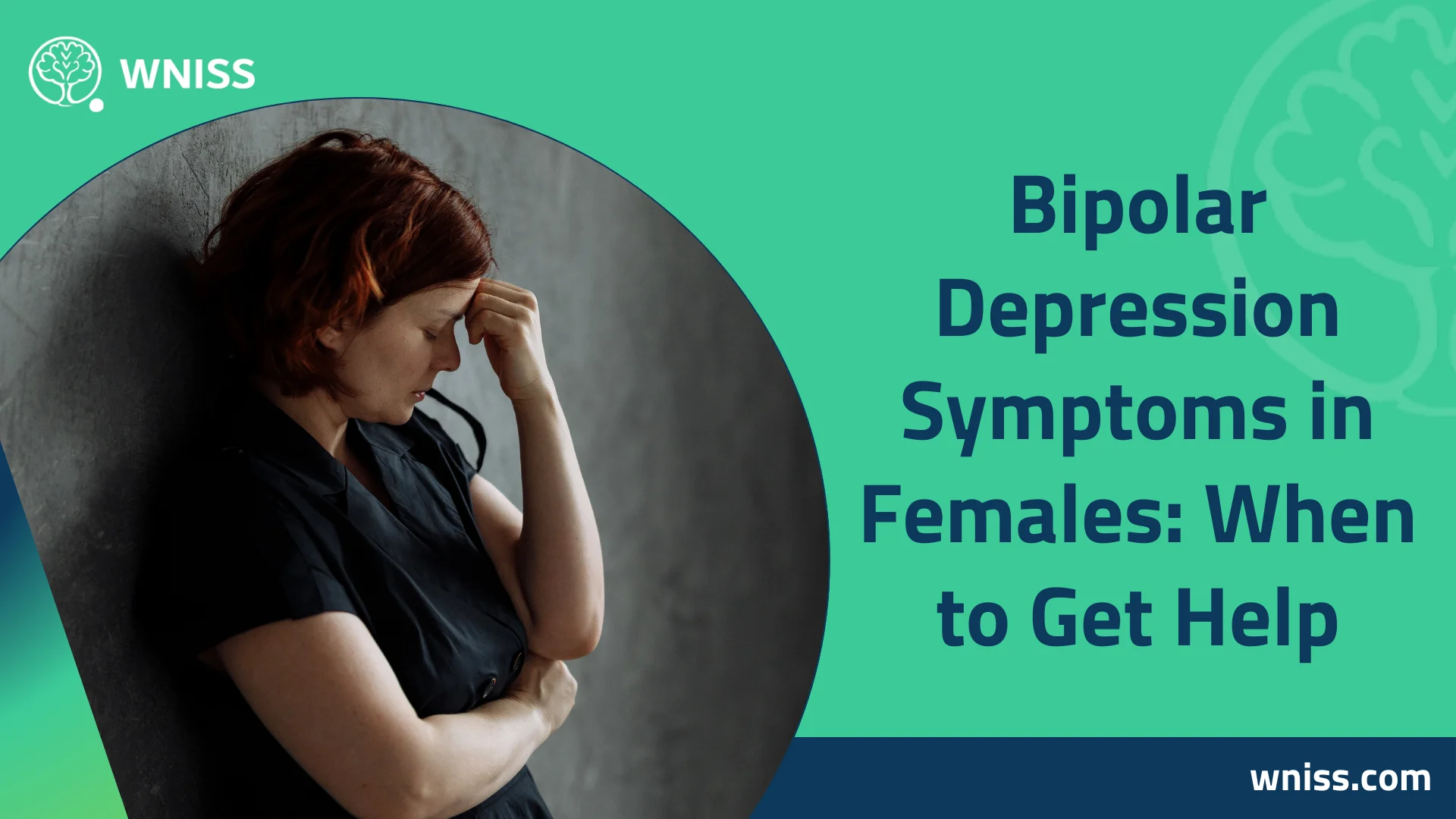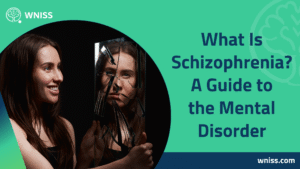When women search for bipolar depression symptoms in females, they want answers that reflect daily life—why energy suddenly drops, why sleep patterns shift, or why mood declines before a period or after childbirth. Bipolar disorder includes both depressive and manic or hypomanic episodes, but in women, depression often dominates and is sometimes mistaken for unipolar depression. Recognizing female-specific patterns, asking the right diagnostic questions, and following evidence-based treatment can make the difference between ongoing struggle and steady recovery.
What Bipolar Depression Symptoms in Females Looks Like?
In bipolar depression you don’t just feel “sad”—you feel slowed. Simple tasks drain energy. Sleep and appetite change. Focus slips, decisions stall, and life shrinks. Because many women spend more time depressed than manic/hypomanic across the year, the bipolar part can be missed unless someone asks about any past periods of speed (reduced need for sleep, faster ideas, unusual risk-taking). Authoritative resources describe these patterns clearly.

Core symptoms you’ll notice (depression episode):
- Low mood or loss of interest most days; fatigue and slowed thinking/speech
- Sleep problems (insomnia or oversleeping) and appetite/weight changes
- Concentration problems, guilt, pessimism; thoughts of death in severe cases
Why “female” presentation matters: women with bipolar disorder show more depressive episodes, mixed features, and rapid cycling compared with men—one reason misdiagnosis happens.
The First Red Flags of Bipolar
People often ask, “What’s the first red flag of bipolar?” The answer is a cluster, not a single symptom—especially changes in sleep, speed, and risk. Catching the cluster early lets you tighten routines and contact care before an episode takes over.
Early-warning cluster:
- Falling sleep need (sleeping <6 hours and still energetic),
- Faster speech/ideas, unusual confidence or irritability,
- Spending surges or sudden big plans, or
- A depressed mood that’s oddly agitated or sped-up (mixed features).
What to do same-day: stabilize bed/wake times, reduce stimulation at night, and text/call your clinician if two red flags appear together; these steps align with national guideline logic for timely escalation.
Hormones & Life Stages — Patterns Many Women Recognize
Biology isn’t destiny, but hormonal transitions can nudge mood systems. Planning around these windows reduces surprises and risk.
- Premenstrual worsening (PME): many women with bipolar report cycle-linked dips in mood, anxiety, or sleep in the late luteal phase. PME is distinct from PMDD and deserves prospective tracking (apps/diaries) because recall is unreliable. Treatment may adjust routines/meds around vulnerable days. Reviews highlight PME across mood disorders, including bipolar.
- Pregnancy & postpartum: bipolar carries elevated postpartum relapse risk, and a history of bipolar markedly increases the risk of postpartum psychosis (PPP)—a psychiatric emergency requiring urgent care. Planning with a perinatal psychiatry team before delivery is protective.
- Perimenopause & menopause: several studies and reviews suggest greater symptom burden—especially depression—during perimenopause/late menopause for many women with bipolar. Expect to re-tune sleep, routines, and treatment during this transition.
Why this matters: these windows don’t cause bipolar, but they change thresholds. Tracking them lets you pre-decide guardrails (sleep protection, light exposure, medication timing) for calmer weeks.
Why Women Get Misdiagnosed (and how to avoid it)
Because women often present with depression first—and more often— bipolar is frequently mislabeled as unipolar depression or an anxiety disorder. Unchecked, that can lead to antidepressant-only treatment that destabilizes some patients.
- What to ask for at assessment: timeline of sleep, speed, spending, and energy across months/years; family history; screening for mixed features; and medical rule-outs (thyroid disease, sleep apnea). Public health resources emphasize looking at the course of illness, not just a bad week.
- Why it’s high-stakes: correct labeling changes medication choices and safety checks. National guidelines (NICE) structure evaluation and treatment accordingly.
How Clinicians Diagnose (Beyond any “bipolar test”)
There’s no single lab test. A good evaluation ends with a plan you can run, not just a label.
- Structured clinical interview that maps episodes, function, and risks;
- Validated scales to support judgment and track response;
- Rule-outs/overlaps (thyroid, sleep disorders, substances, PTSD/ADHD);
- Specifiers (e.g., mixed or psychotic features) that change treatment;
- Perinatal plan if you’re pregnant/planning—specialist input matters. These steps align with NICE guidance on recognition and management.
Treatment That Works (Safety-first and female-aware)
: The best outcomes come from medication + psychotherapy + rhythm protection, adjusted for life stage and pregnancy plans.

Medication (foundation):
- Per CANMAT/ISBD and NICE, options for bipolar depression include mood stabilizers and selected atypical antipsychotics; antidepressant monotherapy is not recommended in bipolar I and is contraindicated in mixed/manic states—if used, it’s with a mood stabilizer and close monitoring.
- Valproate requires special caution in women who could become pregnant due to teratogenic risk; follow national safety guidance and discuss alternatives
Psychotherapies with strong support:
- CBT to challenge pessimistic predictions and restart activity,
- Interpersonal & Social Rhythm Therapy (IPSRT) to stabilize bed/wake, meals, activity blocks, and social timing,
- Family-Focused Therapy (FFT) to improve communication and write a shared early-warning/crisis plan.
Hormone-aware planning:
- Expect to tune routines/meds for late luteal days, postpartum months, and perimenopause; prospective mood/sleep tracking and scheduled reviews help.
A 14-Day Stability Plan for Women
Motivation varies; calendars don’t. Pre-decide two weeks so you’re not negotiating with mood or hormones at 11 p.m.
- Days 1–3 — Install anchors
- Fix a sleep window (e.g., 11:30–07:00) and hold it within ±30 minutes—even after bad nights.
- Get 10–20 minutes of morning light within an hour of waking; add a 5–10 minute movement block.
- Start a one-line nightly log (sleep hours, mood 1–10, meds taken, one “kept promise”) and mark cycle day if menstruating.
- Days 4–7 — Reduce “noise” & add friction to risk
- Caffeine last call 8+ hours before bed; dim screens 60 minutes before bed; devices out of bed.
- Install a 24-hour pause script for purchases/commitments (wait → share with an ally → re-decide tomorrow).
- Do 2 tiny tasks/day (5–20 min): one self-care, one life admin.
- Days 8–10 — Hormone-aware tuning
- If late luteal (PMS window), front-load sleep protection and set lighter task targets.
- Schedule two low-stakes social contacts (walk/text/coffee) to counter isolation inertia.
- Hold a 15-minute family/partner check-in (appreciations → what helped → one small change); confirm escalation steps.
- Days 11–14 — Stress-test & update
- Simulate a late meeting or travel night; keep the same wake time next morning; use light + a short walk to reset.
- Review your log with a clinician/coach; keep two habits and tweak one (earlier caffeine cut, firmer wind-down).
This rhythm-based approach mirrors evidence supporting IPSRT-style stabilization for bipolar disorders.
Make the Next 14 Days Calmer — WNISS Women’s Bipolar Care (Online & Measured)
When depression flattens your days—or when speed sneaks in around periods, postpartum, or perimenopause—you don’t need scattered tips. You need one coordinated plan that fits your life and adjusts with your cycle.
- Rapid, compassionate online assessment: we map your episode history, hormone-linked patterns, sleep, and goals—then hand you a plain-English plan for the next 2–4 weeks.
- Therapy you’ll actually use: CBT for momentum, IPSRT for rhythms, and family scripts that turn conflict into teamwork.
- Medication coordination: we liaise with your prescriber for activation-safe choices, smart dose timing, and perinatal planning aligned with guidelines.
- Dashboards you can trust: 60-second nightly logging and weekly reviews so progress becomes visible, not vague.
- Life-fit routines: shift work, parenting, study, or travel—we install anchors that survive the busiest seasons.
Ready to feel movement again? Book a confidential session now at WNISS and start your 14-day plan with a specialist by your side.
FAQs about Bipolar Depression Symptoms in Demales

What is the first red flag of bipolar in women?
Watch for a cluster: falling sleep need + faster ideas/speech + unusual spending or big plans; or an agitated, sped-up depression (mixed features). Tighten sleep, lower stimulation at night, and contact your clinician early—consistent with guideline-based care.
How do you detect bipolar depression (vs. regular depression)?
By mapping a timeline of episodes (days–weeks), screening for any past “up” periods (reduced sleep need, speed, risk), and ruling out medical/substance causes. Public health resources emphasize judging the course of illness, not only today’s symptoms.
Do hormones make bipolar worse?
They can lower thresholds at specific times: late luteal days (PME), postpartum, and perimenopause/menopause. Prospective tracking and pre-agreed adjustments (sleep, routines, medication timing) reduce risk.
Is bipolar more depressive in females?
On average, women show more depressive episodes, mixed features, and rapid cycling than men—one reason misdiagnosis happens.
Are antidepressants safe for bipolar depression?
Sometimes—with a mood stabilizer and close monitoring. Antidepressant monotherapy is not recommended in bipolar I and is contraindicated in mixed/manic states; decisions are individualized with your prescriber.
I’m pregnant or planning—what should I do?
Ask for perinatal psychiatry input to plan medication and monitoring. Postpartum months bring higher relapse risk, and history of bipolar raises PPP risk—know your early-warning plan and supports.
Bipolar depression in women is understandable, trackable, and highly manageable with the right system: a diagnosis based on timelines (not snapshots), activation-safe medication choices, rhythm-focused psychotherapy (IPSRT/CBT), and hormone-aware routines. If you install small anchors and review weekly—especially around the late luteal, postpartum, and perimenopausal windows—stability becomes a habit, not a lucky streak. If you want a kind, coordinated roadmap that fits your life, WNISS can help you start online this month.
Medical References
- NIMH — Bipolar Disorder (Health Topic & Publication). Symptoms, causes, diagnosis, and treatment overview. المعهد الوطني للصحة العقلية+1
- NICE CG185 — Bipolar disorder: assessment and management (guideline & PDF; includes MHRA valproate safety advice). NICE+1
- CANMAT/ISBD 2018 Bipolar Treatment Guidelines (open-access summary & full PDF). PMC+2Canmat+2
- Gender differences in bipolar disorder (review; women show more depression, rapid cycling, mixed states). PubMed
- Postpartum relapse risk in bipolar disorder (meta-analysis). psychiatryonline.org
- Postpartum Psychosis (2023 review; elevated risk with bipolar history). PMC
- Premenstrual exacerbations (PME) of mood disorders (review; bipolar included). PMC
- Perimenopause and mood symptoms in bipolar disorder (review/summary). PMC




